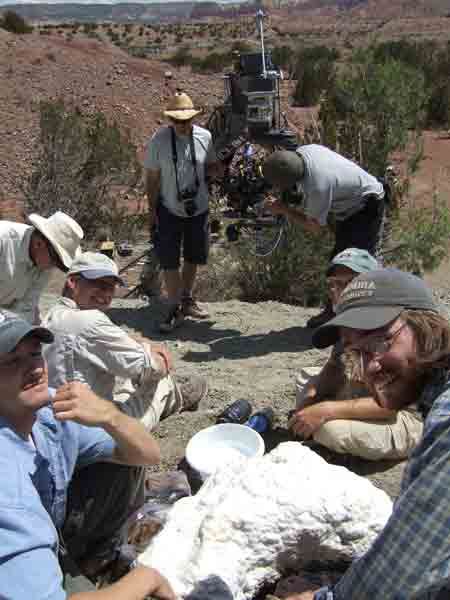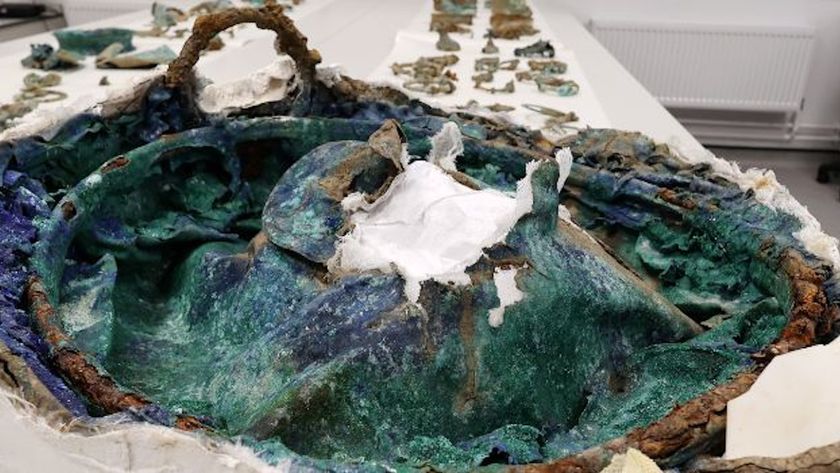Following a Childhood Dream: Discovering Dinosaurs

Randall Irmis is an Assistant Professor in the Department of Geology and Geophysics at the University of Utah and Curator of Paleontology at the Utah Museum of Natural History, affiliated with the university. His research focuses on major changes in terrestrial vertebrate ecosystems in the fossil record and much of his work has centered on the origin and early diversification of dinosaurs. Randall is a co-leader of the research project excavating the Hayden Quarry at Ghost Ranch, New Mexico, where paleontologists have discovered many new specimens of early dinosaurs and their relatives. He was part of the research team that recently announced the discovery of a new carnivorous dinosaur species from Ghost Ranch, called Tawa hallae. Find out more about their discovery at http://www.nsf.gov/tawa. Irmis answers the ScienceLives 10 Questions below.
Name: Randall Irmis Age: 27 Institution: Utah Museum of Natural History and Department of Geology & Geophysics, University of Utah Field of Study: Vertebrate Paleontology
What inspired you to choose this field of study? As cliché as it might sound, I got into vertebrate paleontology through my interest in dinosaurs as a young child. I never grew out of it, and as I got older my interests broadened to geology and evolutionary biology. As an undergraduate, I was fortunate enough to have two great professors (David Elliott and Jim Mead) at Northern Arizona University who encouraged my interests in vertebrate paleontology.
What is the best piece of advice you ever received? My father always reminds me not to be afraid to take advantage of unexpected opportunities. He is completely correct - my current tenure track position wasn't something I was actively seeking when I applied.
What was your first scientific experiment as a child? You'd probably have to ask my parents, but I think it was seeing on which color background ice melts fastest in the sunlight. Perhaps the most memorable was during junior high, where I tested the quality of different brands of charcoal by measuring their peak temperature and subsequent rate of temperature decline. Turns out the off-brands were in some ways better than the name brands!
What is your favorite thing about being a researcher? In the most general terms, it is the chance to make new discoveries and add to the scientific body of knowledge. More specifically, the part I love most about being a paleontologist is doing fieldwork and traveling all over the world.
What is the most important characteristic a researcher must demonstrate in order to be an effective researcher? Perseverance and a willingness to dedicate the time to completing projects. Every researcher runs into major roadblocks in their research, and it takes time and effort to overcome them. Just as important, doing scientific research is not a 40-hour-a-week job - nearly all successful scientists spend 60 to 80 hours a week on some aspect of their work. That's why your research has to be your passion!
Sign up for the Live Science daily newsletter now
Get the world’s most fascinating discoveries delivered straight to your inbox.
What are the societal benefits of your research? Paleontology is never going to cure cancer, but I really like to think of it as a "gateway science." So many folks are interested in dinosaurs and other ancient life, particularly kids. What better way to get them hooked on science, and use paleontology as a way to teach critical thinking, the scientific process, and evolution?
Who has had the most influence on your thinking as a researcher? There is no one person, but my thinking has largely been shaped by my fellow graduate students at UC-Berkeley. In addition, there are several other folks at other institutions and we all started collaborating as graduate students; this collaboration and exchange of ideas has continued as we are now faculty, postdocs, etc. What about your field or being a researcher do you think would surprise people the most? The romantic vision of a paleontologist is someone who spends most of their time out in the wilderness scouring badlands for fossils. Although I am extremely lucky in that I get to spend two to three months a year doing fieldwork, paleontologists (including myself) spend 90 percent of our time in front of a computer. Most of that time is spent writing - grant proposals, research papers, e-mails, etc.
If you could only rescue one thing from your burning office or lab, what would it be? My laptop computer! After that it would definitely be my library of books and reprints.
What music do you play most often in your lab or car? I listen to a lot of different music, but most often you'll probably hear some form of indie rock or alt country, with some classic rock sprinkled in. In the field at the Hayden Quarry, we hook up various iPods to battery-powered speakers for some quarry music. Tenacious D and Mitch Hedberg get pretty heavy rotation.












